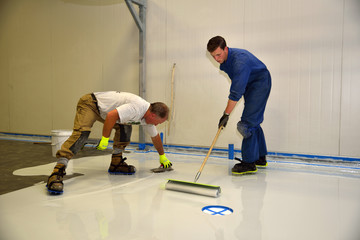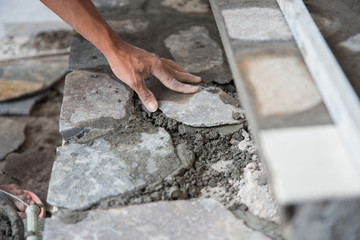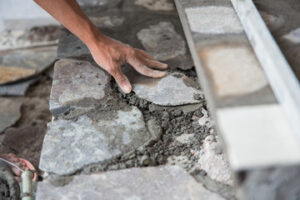When a plumbing emergency occurs, it’s important to act quickly. However, it’s also critical to vet your 24-hour plumber carefully before hiring them.
Look for reviews and testimonials online, and consider using a matching service to find the best plumber for your needs. In addition, always ask for a quote upfront before hiring an Emergency Plumbing Aurora CO.

Plumbing problems happen when you least expect them and often at inconvenient times. If you’re facing a major issue such as a burst pipe, water heater malfunction, or significant leak, contacting an emergency plumber immediately is important. These professionals are available around the clock and can provide real-time solutions.
Before you call a 24-hour plumber, take some time to research their qualifications and customer reviews. You can also ask friends and family for recommendations. This will help you find a plumber with the right experience and skills to handle your plumbing problem quickly and efficiently.
Many people mistakenly think that all plumbing issues are emergencies that require immediate attention from a plumber. In reality, however, most problems can wait until normal business hours or even until the weekend when plumbers are less busy.
For example, a minor leak from a faucet or toilet can usually wait until the plumber’s next visit to your home. If the leak is located in a visible spot, you can place a bowl or bucket underneath it to catch the water until the plumber arrives.
A common plumbing emergency that many people ignore is a gas leak. If you smell gas in your house, don’t panic, and don’t try to fix the problem yourself. Instead, immediately contact a local emergency plumber for safe and effective repairs.
Another common plumbing emergency is a burst water line. If you suspect this is the case, turn off your water at the main shut-off valve in your home. This is typically located near your front or back yard, and it should look like a red or blue handle with an image of a water hose connected to it.
If you’re not sure where the valve is located, it’s recommended to look online for a diagram of your home’s plumbing system. It should indicate where the main shut-off valve is located and what direction it’s facing. If you can’t find the valve, contact your local water department for assistance. Once the plumber locates the source of the leak, they can take steps to repair it.
A burst pipe is a serious problem, and it will require emergency plumbing to repair. However, there are some things you can do to minimize damage until the plumber arrives. The first thing to do is to turn off the water supply. This will stop water flow and prevent further damage from flooding the area. It is also important to move any furniture or valuables away from the affected area. This will help protect them from water damage and mildew.
Another thing you can do is try to find the leak. This can be hard if the pipe has caused significant damage to your home, but you should try and locate the source of the leak. You can do this by turning off your water main and looking around for signs of a leak. These signs can include water sounds coming from your walls, clanging noises, and rattling noises from pipes hitting each other or the floor.
You should also make sure to turn off any electrical appliances near the leak and check if there are any wires exposed that may be live. These are serious hazards and you should never try to fix a burst or broken pipe yourself as it could cause further damage and even more dangerous conditions.
Many things can cause a pipe to burst, but some of the most common reasons are freezing temperatures, heavy rains and poor piping installation. The latter can happen when a pipe isn’t properly soldered or has loose connections. It is important to always have your piping professionally installed.
Corrosion is another common reason for a pipe to burst. This can happen over time due to a number of factors, including a build-up of rust, water that has a high concentration of iron or a pH imbalance in the water. It’s important to have your pipes regularly inspected by a professional so that any problems can be repaired before they become serious.
There are some simple steps you can take to prevent a burst pipe before it happens, such as insulating your pipes and keeping them insulated. You should also make sure to know where your water shut-off valve is located so that you can turn it off quickly in an emergency. By following these tips, you can minimize the impact of a burst pipe and save yourself some money in the long run.
If you’re without hot water, it’s time to call an emergency plumber. This is especially true if you need to bathe or wash dishes by hand, but it’s also the case for those with medical conditions that require warm water to function properly.
A constant supply of lukewarm water might mean that the upper heating element on your water heater is out of commission. On the other hand, if your water is coming out discolored or has an odd aroma, it might be a sign that there’s a problem with your municipal water supply.
Leaks in and around your water heater are another reason to call an emergency plumber. A leaky gas line from the water heater can cause carbon monoxide poisoning, so it’s important to have any such issues addressed as soon as possible.
Another common problem with water heaters is that they can run out of hot water. If yours is running out fast, it might be a sign that the thermostat needs to be reset. For gas water heaters, it could also be a problem with the thermocouple or the gas control valve.
If your water heater is leaking, you should turn off the power and gas supplies to it. You should then remove the access panel and take a look inside. If there’s rust across the burner, this may be why your water isn’t heating up. You can try to relight the pilot light yourself (as long as you follow the safety instructions that came with your unit) or have an emergency plumber do it for you.
An emergency drain is a vital component of your water heater, and it’s often overlooked. It’s connected to a pipe that leads outside or to a designated drain area, and it helps prevent damage from flooding or explosions in case the tank’s pressure relief valve fails. Regular inspection and maintenance of the emergency drain is essential.
It’s important to vet any plumbing company before hiring them, but especially an emergency plumber. Checking their references and looking at pictures of previous jobs on their website are good places to start. Also, don’t be afraid to ask about any fees they might charge for coming out on weekends or after-hours. These fees are typically based on their hourly rate plus a mileage or trip fee, and it’s worth asking for an estimate upfront so you can be prepared for the cost.
A toilet that won’t flush isn’t just inconvenient—it can be downright scary. However, not all clogged toilets and drains require an emergency plumber. If the problem seems isolated to one toilet, you might be able to clear it yourself by plunging or using an affordable plumber’s snake. If the clog appears to be widespread throughout the home, contact a professional right away to minimize damage and avoid sewage backups.
Before calling for an emergency plumber:
- Shut off water to the toilet by turning off the valve on the wall behind the tank or in the basement.
- Remove the lid from the toilet tank and empty out any remaining water.
- If the toilet won’t stop running, remove the flush handle chain and use a plastic shopping bag or cloth to catch any debris.
- Check the flapper to ensure it isn’t warped or damaged, and follow the steps for replacing it if needed.
If the water in your toilet is brown or yellow, it’s likely contaminated by a broken pipe or sewer backup. This can be dangerous to your health, so it’s important to call a 24-hour plumber as soon as possible. Emergency plumbers will usually be able to clear the blockage and restore safe water flow, but they may charge extra for the service.
Most homeowners can perform some basic plumbing repairs, including unclogging a toilet and adjusting the flush handle. If you’re handy, you can also learn how to replace a toilet overflow tube or float.
By taking some preventative measures, you can lower your risk of plumbing emergencies and save money on utility bills. Insulate exposed pipes in cold climates, dispose of waste properly, and clean your drains regularly to avoid clogging. You should also monitor your water pressure to prevent pipes from bursting or becoming too strained.




:max_bytes(150000):strip_icc()/072222-Beauty-filler-lead-2000-9332bd26e9f94c33b845272cca260ba1.jpg)